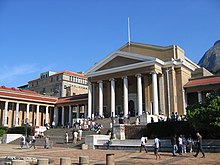
Austin Roberts was a South African zoologist. He is best known for his Birds of South Africa, first published in 1940. He also studied the mammalian fauna of the region: his work The mammals of South Africa was published posthumously in 1951. The 7th edition of Roberts' Birds of Southern Africa which appeared in 2005, is the standard work on the region's birds.

The University of Cape Town (UCT) is a public research university located in Cape Town in the Western Cape province of South Africa. UCT was founded in 1829 as the South African College making it the oldest higher education institute in South Africa. In terms of full university status, it is the oldest university in South Africa and the oldest extant university in Sub-Saharan Africa together with Stellenbosch University which received full university status on the same day in 1918.
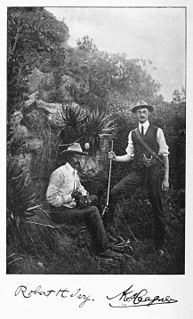
Alwin Karl Haagner was a South African ornithologist and mammalogist, who served for a decade as the director of the Pretoria Zoological Gardens. He wrote numerous works on South African birds and was instrumental in the establishment of Kruger National Park and in early measures to protect South African wildlife.
The Cornell Lab of Ornithology is a member-supported unit of Cornell University in Ithaca, New York, which studies birds and other wildlife. It is housed in the Imogene Powers Johnson Center for Birds and Biodiversity in Sapsucker Woods Sanctuary. Approximately 250 scientists, professors, staff, and students work in a variety of programs devoted to the Lab's mission: interpreting and conserving the Earth's biological diversity through research, education, and citizen science focused on birds. Work at the Lab is supported primarily by its 75,000 members. The Cornell Lab publishes books under the Cornell Lab Publishing Group, a quarterly publication, Living Bird magazine, and a monthly electronic newsletter. It manages numerous citizen science projects and websites, including the Webby Award-winning All About Birds.

The Cape siskin is a small passerine bird in the finch family. It is an endemic resident breeder in the southern Cape Province of South Africa.

The Cape robin-chat is a small passerine bird of the Old World flycatcher family Muscicapidae. It has a disjunct range from South Sudan to South Africa. The locally familiar and confiding species has colonized and benefited from a range of man-altered habitats, including city suburbs and farmstead woodlots. It is an accomplished songster like other robin-chats, but is rather less colourful than most, and frequents either drier settings or higher altitudes. It forages in the proximity of cover, in the open or in fairly well-lit environments. Its distribution resembles that of the karoo–olive complex of thrushes, but it prefers the bracken-briar fringes of Afromontane forest, and does not enter far into forest proper. It is altitudinally segregated from the red-capped robin-chat, and is less of a skulker.
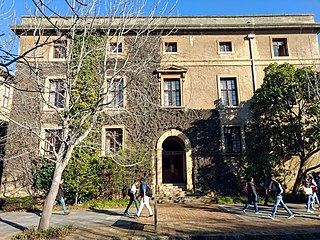
The FitzPatrick Institute of African Ornithology is a South African biological research and conservation institute based at the University of Cape Town. The mission statement of the Institute is “to promote and undertake scientific studies involving birds, and contribute to the practice affecting the maintenance of biological diversity and the sustained use of biological resources”.
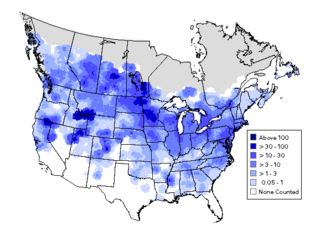
A bird atlas is an ornithological work that attempts to provide information on the distribution, abundance, long-term change as well as seasonal patterns of bird occurrence and make extensive use of maps. They often involve a large numbers of volunteers to cover a wide geographic area and the methods used are standardized so that the studies can be continued in the future and the results remain comparable. In some cases the species covered may be restricted to those that breed or are resident. Migration atlases on the other hand cover migratory birds depict maps showing summaries of ringing and recoveries.
BirdLife South Africa, formerly the South African Ornithological Society (SAOS), is the South African national partner organisation of BirdLife International.

The Sálim Ali Centre for Ornithology and Natural History (SACON) is a national centre for information, education and research in ornithology and natural history in India. It was inspired by and named in honour of Salim Ali, the leading pioneer of ornithology in India. It is an autonomous organisation established in 1990 as a public- NGO partnership between the MoEF&CC, and the Bombay Natural History Society(BNHS) under the Centre of Excellence Scheme and registered under the Indian Societies Registration Act. Its headquarters are at Anaikatti, Coimbatore, Tamil Nadu, India. SACON is associated with the Ministry of Environment and Forests
SABAP2 is the acronym for the Southern African Bird Atlas Project 2, which is the follow-up to the Southern African Bird Atlas Project. The first atlas project took place from 1987 to 1991. The current project was a joint venture between the Animal Demography Unit at the University of Cape Town, BirdLife South Africa, and the South African National Biodiversity Institute (SANBI). Following the closure of the Animal Demography Unit, the project is now managed by the FitzPatrick Institute of African Ornithology, University of Cape Town. The project aims to map the distribution and relative abundance of birds in southern Africa, and the original atlas area included South Africa, Lesotho, and Eswatini, although since 2012 the project has expanded to include Namibia, Botswana, Zimbabwe and Mozambique. SABAP2 was launched on 1 July 2007. The field work for this project is conducted by more than 1700 volunteers, known as citizen scientists – they collect the data in the field at their own cost and in their own time. As such they make a huge contribution to the conservation of birds and their habitat.

The Harry Oppenheimer Fellowship Award is awarded annually by the Oppenheimer Memorial Trust. It is considered the top award for research on the African continent.
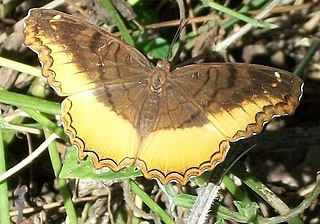
Eurytela dryope, the golden piper, is a butterfly of the family Nymphalidae, found in Sub-Saharan Africa, the Arabian peninsula and Madagascar.
The Southern African Bird Atlas Project (SABAP) was conducted between 1987 and 1991. Because a new bird atlas was started in southern Africa in 2007, the earlier project is now referred to as SABAP1. The new atlas project is known as the Second Southern African Bird Atlas Project, and is abbreviated to SABAP2. SABAP2 is still ongoing. It is now managed by the FitzPatrick Institute of African Ornithology at the University of Cape Town. Most of the data capture happens through the application BirdLasser. The project is currently funded by BirdLife South Africa and the South African National Biodiversity Institute.
Anusuya Chinsamy-Turan is a South African vertebrate paleontologist known for her expertise and developments in the study of the microstructure of fossil teeth and bones of extinct and extant vertebrates. She was the head of the Department of Biological Sciences, at the University of Cape Town from 2012 to 2015.
The South African Bird Ringing Unit (SAFRING) is based at the University of Cape Town and provides bird ringing services in South Africa and other African countries. This entails providing ringing equipment to qualified ringers, and curating all ringing data. SAFRING communicates with ringers and interested parties through annually publishing one or two issues of a newsletter, Afring News, and by maintaining a list server. SAFRING holds national training courses, annually if there is sufficient demand. SAFRING liaises with the provinces who have the responsibility of issuing permits. SAFRING has a strict code of ethics to ensure the safety of birds handled. SAFRING acknowledges the importance of bird ringing in that it has been described as the most important tool in ornithology in the 20th century.
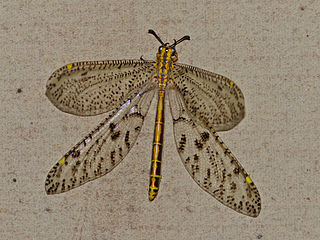
Palpares sobrinus is a species of antlion in the family Myrmeleontidae. It is found in southern Africa.
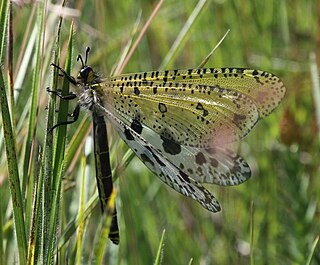
Palpares caffer is a species of antlions in the family Myrmeleontidae, which is native to southern Africa. It was described by Hermann Burmeister in 1839.
Mercedes S. Foster is an American zoologist who researched the evolution of lek behavior in birds, bird-plant interactions, and male-male cooperation in reproduction. She is very active in conservation efforts, including training workshops, being a Scientific Advisor for the National Bio-inventory Program of Paraguay, as a Founding Director of the American Bird Conservancy, and as a Founder and Co-coordinator of the Latin American Library Enhancement Program. She is also the Director and Editor of a program to publish handbooks giving "standard methods for measuring and monitoring the biodiversity of different groups of organisms".
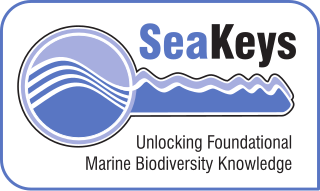
SeaKeys is a large collaborative marine biodiversity project funded through the Foundational Biodiversity Information Program in South Africa. The purpose of the project is to collect and distribute genetic, species and ecosystem information relating to marine biodiversity in southern Africa, which may be used to support informed decision-making about the marine environment.













